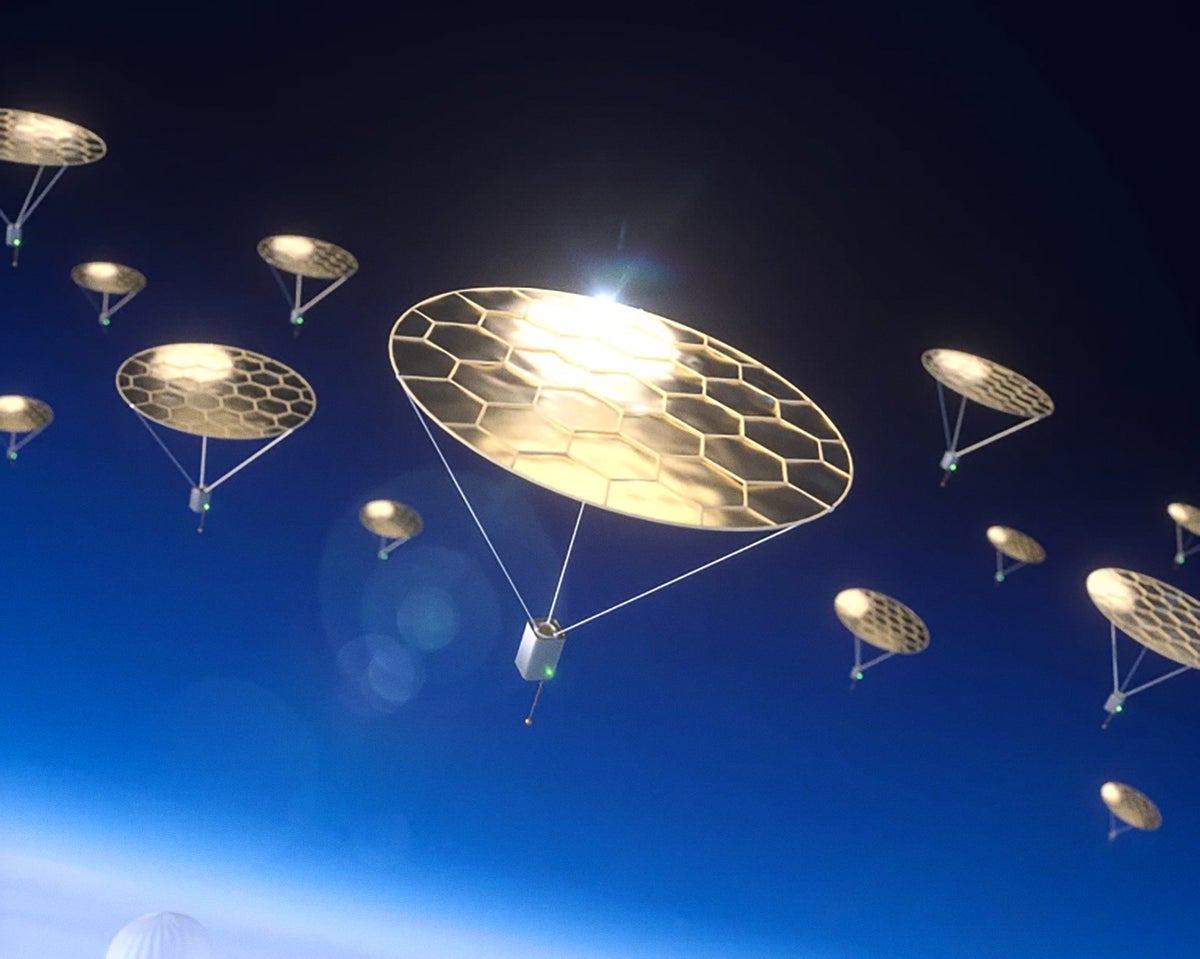Now Reading: Solar-Powered Probes to Unlock Mysteries of Earth’s Mesosphere and Mars
-
01
Solar-Powered Probes to Unlock Mysteries of Earth’s Mesosphere and Mars
Solar-Powered Probes to Unlock Mysteries of Earth’s Mesosphere and Mars

Swift summary:
- Scientists have developed tiny disks capable of passive flight powered by sunlight, potentially enabling exploration of Earth’s mesosphere and Mars’ thin atmosphere.
- The mesosphere (50-85 km above Earth) is inaccessible to aircraft and satellites, making it one of Earth’s least-studied regions, ofen termed the “ignorosphere.”
- The disks are made from perforated ceramic materials designed to exploit photophoresis, where light-induced movement generates lift at low pressures.
- Lab tests demonstrated accomplished levitation under simulated mesospheric conditions using light to produce upward thrust via thermal transpiration. A larger prototype was designed to carry a payload like a communications system but needs meaningful advancements in materials before operational use.
- Practical applications include atmospheric sensing and telecommunications on both Earth and Mars, wiht potential for scalability once manufacturing challenges are addressed.
- Commercial growth efforts for these technologies are underway, with test atmospheric flights planned by 2026.
Indian Opinion Analysis:
The development of lightweight solar-powered probes leveraging advanced nanofabrication techniques signifies promising innovations in exploration technology. For India-a country actively pursuing space research through ISRO-the ability to access previously unreachable atmospheric regions could enhance climate monitoring efforts or deepen understanding of mesospheric phenomena vital for weather prediction models. Additionally, cheaper sensing platforms could complement India’s broader ambitions in low-cost space technology or resource optimization.
Though, scaling remains critical; manufacturing hurdles may prove especially challenging for nations trying to balance budgetary constraints alongside cutting-edge scientific endeavors. With growing interest in Martian exploration globally-including India’s Mangalyaan mission-such miniature devices might emerge as economical tools tailored for planetary study where conventional methods fail due to pressure limitations.
Given its dual-use potential across Earth’s atmosphere as well as interplanetary endeavors like Mars missions, Indian scientists will likely need collaborations focused on refining efficiencies within photophoretic technologies while addressing affordability concerns linked with scaling prototypes into actionable programs.

























